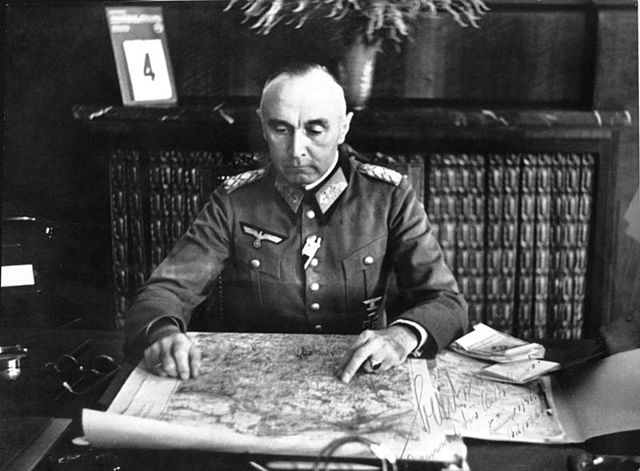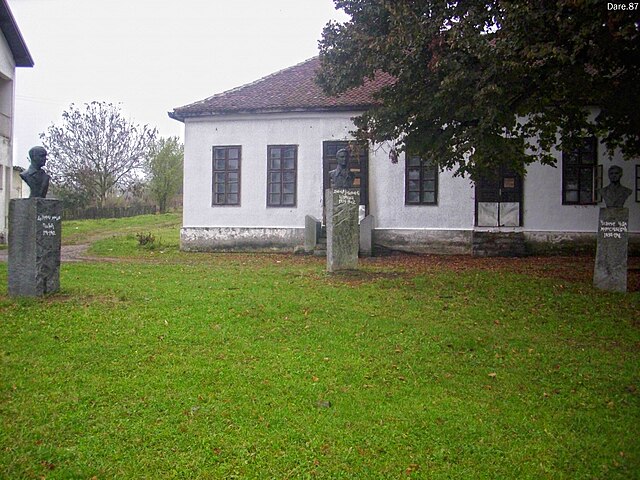Dimitrije Ljotić was a Serbian and Yugoslav fascist politician and ideologue who established the Yugoslav National Movement (Zbor) in 1935 and collaborated with German occupational authorities in the Territory of the Military Commander in Serbia during World War II.
A column of Serbian soldiers retreating through the Albanian mountains, c. 1915. Ljotić was involved in the Serbian Army's retreat through the country during World War I.
German soldiers arresting Serbian civilians prior to the Kragujevac massacre, in which Ljotić's forces participated.
Territory of the Military Commander in Serbia
The Territory of the Military Commander in Serbia was the area of the Kingdom of Yugoslavia that was placed under a military government of occupation by the Wehrmacht following the invasion, occupation and dismantling of Yugoslavia in April 1941. The territory included only most of modern central Serbia, with the addition of the northern part of Kosovo, and the Banat. This territory was the only area of partitioned Yugoslavia in which the German occupants established a military government. This was due to the key rail and the Danube transport routes that passed through it, and its valuable resources, particularly non-ferrous metals. On 22 April 1941, the territory was placed under the supreme authority of the German military commander in Serbia, with the day-to-day administration of the territory under the control of the chief of the military administration staff. The lines of command and control in the occupied territory were never unified, and were made more complex by the appointment of direct representatives of senior Nazi figures such as Reichsführer-SS Heinrich Himmler, Reichsmarschall Hermann Göring, and Reichsminister Joachim von Ribbentrop. The Germans used Bulgarian troops to assist in the occupation, but they were at all times under German control. Sources variously describe the territory as a puppet state, a protectorate, a "special administrative province", or describe it as having a puppet government. The military commander in Serbia had very limited German garrison troops and police detachments to maintain order, but could request assistance from a corps of three divisions of poorly-equipped occupation troops.

A propaganda poster from occupied Serbia, describing the possible future of Serbia if the Soviet Union or Nazi Germany should win. "With the Germans - Life, or With the Bolsheviks - Death!"
Milan Aćimović was chosen by the Germans to lead the short-lived Commissioner Government.
General der Artillerie Paul Bader commanded the LXV Corps ZbV that comprised the main German occupation troops within the German-occupied territory of Serbia and the NDH.
Uprisings against the Germans and the Aćimović administration began on 7 July in the village of Bela Crkva.






